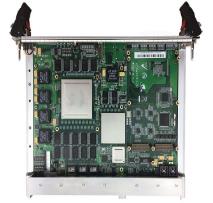The milling technology of the PCB CNC milling machine includes selecting the direction of the cutting tool, the compensation method, the positioning method, the structure of the frame, and the cutting point. Both are important aspects to ensure milling accuracy.
1. Cutting direction and compensation method
When the milling cutter cuts into the plate, one of the faces to be cut is always facing the cutting edge of the milling cutter, and the other side is always facing the cutting edge of the milling cutter. The former has smooth surface to be processed and high dimensional accuracy. The spindle always rotates clockwise. Therefore, whether it is a CNC milling machine with a fixed spindle movement or a fixed spindle movement, when milling the outer contour of the PCB, the tool must be moved counterclockwise. This is commonly referred to as up milling. Climbing milling is used when milling the frame or slot inside the PCB. Milling compensation is when the machine tool automatically installs the set value during milling, so that the milling cutter automatically offsets half of the set milling cutter diameter from the center of the milling line, that is, the radius distance, so that the shape of the milling is set by the program be consistent. At the same time, if the machine tool has a compensation function, you must pay attention to the compensation direction and the command of the program. If the compensation command is used incorrectly, the shape of the circuit board will be more or less equivalent to the length and width of the milling cutter diameter.

2. Positioning method and cutting point
positioning methods can be divided into two; one is internal positioning, and the other is external positioning. Positioning is also very important for process planners. Generally, the positioning plan should be determined during the pre-production of PCB.
Inner positioning is a universal method. The so-called internal positioning is to select the mounting holes in the PCB, plug holes or other non-metallized holes as positioning holes. The relative position of the holes is to be on the diagonal and to choose as large a diameter hole as possible. Metallized holes cannot be used. Because the difference in the thickness of the plating layer in the hole will affect the consistency of the positioning hole you choose, and at the same time, it is easy to damage the plating layer in the hole and the edge of the hole when the board is taken. Under the condition of ensuring the PCB positioning, the number of pins is as small as possible . Generally, the small board uses 2 pins and the large board uses 3 pins. The advantages are accurate positioning, small deformation of the board shape, high accuracy, good shape, and fast milling speed. Disadvantages: There are many types of holes in the board that need to prepare pins of various diameters. If there are no available positioning holes in the board, it is more cumbersome to discuss with the customer to add positioning holes in the board during the preliminary production. At the same time, the different management of milling templates for each type of board is troublesome and expensive.
External positioning is another positioning method, which uses positioning holes on the outside of the board as the positioning holes for the milling plate. Its advantage is that it is easy to manage. If the pre-production specifications are good, there are generally about 15 types of milling templates. Due to the use of external positioning, the board cannot be milled and cut at one time, otherwise the PCB is very easy to damage, especially the jigsaw, because the milling cutter and the dust collector will bring the board out, causing the PCB to be damaged and the milling cutter to break. Using the method of segmented milling to leave the joint points, first mill the plate. When the milling is finished, the program pauses and then the plate is fixed with tape. The second section of the program is executed, and the joint point is drilled out with a 3mm to 4mm drill bit. Its advantage is that the template is low cost and easy to manage. It can mill all circuit boards without mounting holes and positioning holes in the board. It is convenient for small craftsmen to manage. In particular, the production of CAM and other early production personnel can be simplified and the substrate can be optimized at the same time. Utilization rate. The disadvantage is that due to the use of drills, the PCB shape has at least 2-3 raised points that are not beautiful, which may not meet customer requirements, the milling time is long, and the labor intensity of workers is slightly greater.
Three, frame and cutting point
The production of the frame belongs to the pre-production of the PCB. The frame design not only affects the uniformity of electroplating, but also affects the milling. If the PCB design is not good, the frame is easy to be deformed or some small pieces are generated during the milling. Small scrap, the generated scrap will block the vacuum tube or break the high-speed rotating milling cutter. The frame deformation, especially when positioning the milling plate externally, causes the finished plate to deform. In addition, the cutting point and processing sequence are selected well to enable the frame Maintain the maximum intensity and the fastest speed. If the selection is not good, the frame is easily deformed and the PCB is scrapped.